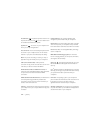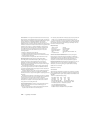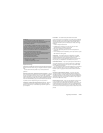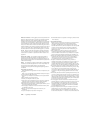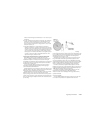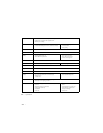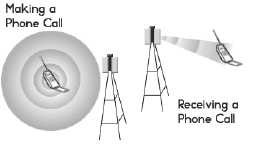
regulatory information :: 239
hazard, or medical emergencies. Remember, 9-1-1is a free call on your
smartphone!
9. Use your smartphone to help others in emergencies. Your smartphone
provides you a perfect opportunity to be a “good Samaritan” in your
community. If you see an auto accident, crime in progress, or other
serious emergency where lives are in danger, call 9-1-1, as you would
want others to do for you.
10. Call roadside assistance or a special wireless non-emergency
assistance number when necessary. Certain situations you encounter
while driving may require attention, but are not urgent enough to merit
a call to 9-1-1. But you can still use your smartphone to lend a hand. If
you see a broken-down vehicle posing no serious hazard, a broken
traffic signal, a minor traffic accident where no one appears injured, or
a vehicle you know to be stolen, call roadside assistance or other
special non-emergency wireless number.
NOTICE FOR CONSUMERS WITH HEARING DISABILITIES
Digital Wireless Phones to be Compatible with Hearing Aids
On July 10, 2003, the Federal Communications Commission (FCC)
modified the exemption for wireless phones under the Hearing Aid
Compatibility Act of 1988. This means that wireless phone manufacturers
and service providers must make digital wireless phones accessible to
individuals who use hearing aids.
For more information, please go to the FCC’s Consumer Alert on
accessibility of digital wireless phones at http://www.fcc.gov/cgb/
consumerfacts/accessiblewireless.html.
Wireless telephones are hand-held phones with built-in antennas, often
called cell, mobile, or PCS phones. These phones are popular with callers
because they can be carried easily from place to place.
Wireless telephones are two-way radios. When you talk into a wireless
telephone, it picks up your voice and converts the sound to radio
frequency energy (or radio waves). The radio waves travel through the air
until they reach a receiver at a nearby base station. The base station then
sends your call through the telephone network until it reaches the person
you are calling.
When you receive a call on your wireless telephone, the message
travels through the telephone network until it reaches a base station close
to your wireless phone. Then the base station sends out radio waves that
are detected by a receiver in your telephone, where the signals are
changed back into the sound of a voice.
The Federal Communications Commission (FCC) and the Food and
Drug Administration (FDA) each regulate wireless telephones. FCC
ensures that all wireless phones sold in the United States follow safety
guidelines that limit radio frequency (RF) energy. FDA monitors the health
effects of wireless telephones. Each agency has the authority to take
action if a wireless phone produces hazardous levels of RF energy.
FDA derives its authority to regulate wireless telephones from the
Radiation Control provisions of the Federal Food, Drug, and Cosmetic Act
(originally enacted as the Radiation Control for Health and Safety Act of
1968). [http://www.fda.gov/cdrh/comp/eprc.html].
FCC derives its authority to regulate wireless telephones from the
National Environmental Policy Act of 1969 (NEPA) and the
Telecommunications Act of 1996 [http://www.fcc.gov/telecom.html].
Updated 7/16/2003
Hands-Free Capability
All CTIA Certified portable products provide the consumer with a toll-
free number for the purchase of a compatible hands-free device.




